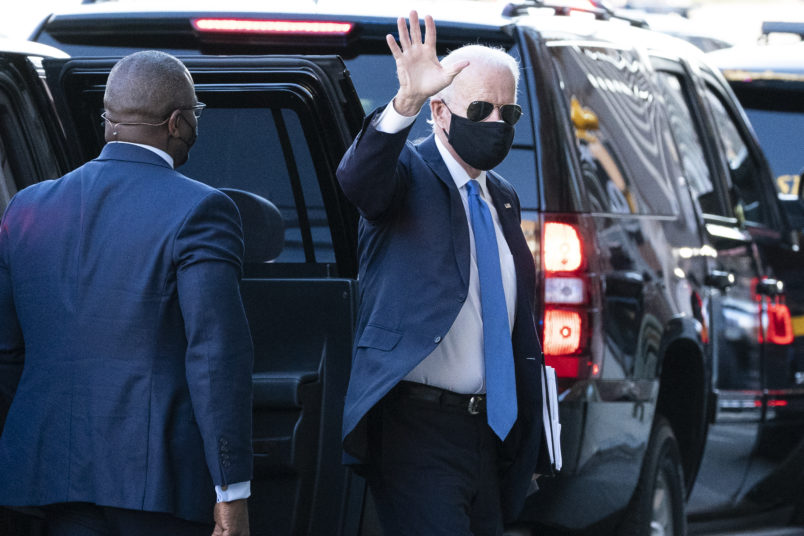
The January 6 attack on the Capitol made Americans acutely aware of the danger that disinformation poses to our democracy. Evidence indicates that the people who stormed the Capitol were radicalized by online QAnon conspiracy theories and by Republicans who pushed the lie that the 2020 election had been stolen. In the face of this disinformation, many different voices are now talking about the 1987 lapse of the Fairness Doctrine, which required companies that held broadcast licenses to present issues honestly, giving equal time to opposing opinions. People are talking about how its principles might be restored even in an era when modern technology means that we no longer need broadcast licenses to share news.
On Tuesday, Shepard Smith, a reporter who worked at the Fox News Channel until 2019 and who now has a show at CNBC, explained to CNN’s Christiane Amanpour why he left his job at the FNC. " I don't know how some people sleep at night,” Smith said, “because I know there are a lot of people who have propagated the lies and have pushed them forward over and over again, who are smart enough and educated enough to know better. And I hope that at some point, those who have done us harm as a nation — and I might even add as a world — will look around and realize what they've done. But I'm not holding my breath."
Over the years, people fed up with the Fox News Channel have organized boycotts of businesses advertising on one show or another, but a big source of FNC’s income is not advertising, but rather cable fees. FNC is bundled with other channels, so many people who do not want it pay for it. Today on Twitter, lawyer Pam Keith noted that a simple regulatory change ending this sort of bundling would force FNC and similar channels to compete on a level playing field rather than being able to survive on fees from people who might not want to support them.
/cdn.vox-cdn.com/uploads/chorus_image/image/68627482/GettyImages_1230143261.0.jpg)
The other story from today with a long history behind it is that the Senate is currently unable to organize itself because Minority Leader Mitch McConnell (R-KY) is insisting that the Democrats commit to leaving the filibuster intact. The filibuster is peculiar to the Senate, and is a procedure designed to draw out the session to prevent a vote on a measure. It is an old system, but it is not exactly hallowed: it was a bit of a mistake.
The Constitution provides for the Senate to pass most measures by a simple majority. It also permits each house of Congress to write its own rules. According to historian Brian Bixby, the House discovered early on that it needed a procedure to stop debate and get on with a vote. The Senate, a much smaller body, did not.
In the 1830s, senators in the minority discovered they could prevent votes on issues they disliked simply by talking the issue to death. In 1917, when both President Woodrow Wilson and the American people turned against the filibuster after senators used it to stop Wilson from preparing for war, the Senate reluctantly adopted a procedure to end a filibuster using a process called “cloture,” but that process is slow and it takes a majority of three-fifths of all members. Today, that is 60 votes.
From 1917 to 1964, senators filibustered primarily to stop civil rights legislation. The process was grueling: a senator had to talk for hours, as South Carolina Senator Strom Thurmond did in 1957, when he spoke for 24 hours straight to stand against a civil rights act. But the need to speed up Senate business meant that in the 1960s and 1970s, senators settled on procedural filibusters that enabled an individual senator to kill a measure simply by declaring opposition, rather than through the old-fashioned system of all-night speeches. The Senate also declared some measures, such as budget resolutions, immune to filibusters. Effectively, this means that it takes 60 votes, rather than a simple majority, to get anything--other than absolutely imperative financial measures-- done.
In 2013, frustrated by the Republicans’ filibustering of President Obama’s judicial nominees and picks for a number of officials in the Executive Branch, then-Senate Majority Leader Harry Reid (D-NV) prohibited filibusters on certain Executive Branch and judicial nominees. In 2017, when Democrats tried to filibuster the nomination of Supreme Court Judge Neil Gorsuch, then-Majority Leader Mitch McConnell killed the filibuster for Supreme Court nominees, as well.
The filibuster remains in place for legislation.
The Democrats currently have no plans to try to kill the filibuster altogether—they do not have the votes, as Joe Manchin (D-WV) has openly opposed the idea and others are leery—but they want to keep the threat of killing it to prevent McConnell and the Republicans from abusing it and stopping all Democratic legislation.
This impasse means that senators are not organizing the Senate. New senators have not been added to existing committees, which leaves Republicans in the majority in key committees. This is slowing down Biden’s ability to get his nominees confirmed.
What’s at stake here is actually quite an interesting question. While the new Senate is split evenly—50 Democrats, 50 Republicans—the 50 Democrats in the Senate represent over 41.5 million more people than the 50 Republicans represent. The filibuster means that no legislation can pass Congress without the support of 10 Republicans. Essentially, then, the fight over the filibuster is a fight not just about the ability of the Democrats to get laws passed, but about whether McConnell and the Republicans, who represent a minority of the American people, can kill legislation endorsed by lawmakers who represent quite a large majority.
We are in an uncomfortable period in our history in which the mechanics of our democracy are functionally anti-democratic. The fight over the filibuster might seem dull, but it’s actually a pretty significant struggle as our lawmakers try to make the rules of our system fit our changing nation.
